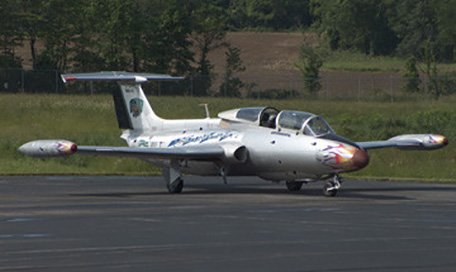HOT
 Production-Quality Lenses Directly from SLA 3D P…
Production-Quality Lenses Directly from SLA 3D P… Forging Ahead with Solar Energy and GibbsCAM CNC…
Forging Ahead with Solar Energy and GibbsCAM CNC… GibbsCAM Software Helps Race-Team Mechanics Beco…
GibbsCAM Software Helps Race-Team Mechanics Beco… Metro Aerospace Introduces 3D Printed Part for F…
Metro Aerospace Introduces 3D Printed Part for F… GibbsCAM Enables Rover Exploration Vehicle Parts…
GibbsCAM Enables Rover Exploration Vehicle Parts… Designing a Custom Boot for an Injured Penguin
Designing a Custom Boot for an Injured Penguin Asano Uses Geomagic 3D Scan Software to Drive In…
Asano Uses Geomagic 3D Scan Software to Drive In…
AEC jet
Extensive testing of the latest orientation algorithm at the Avionics Engineering Center (AEC) of the Ohio University in Athens (OH), USA, confirmed the high accuracy of the SDK and even demonstrated improved accuracy compared to tests performed at the AEC in 2009.
Multiple MTi-G’s were put to test in the Delfin Aero L-29 test jet aircraft, which can perform a wide variety of maneuvers. Several advanced maneuvers that were not tested in the latest test in 2009, but that were expected to be challenging for the MTi-G (now MTi-G-700), were included in the flight plan this time. These maneuvers included barrel rolls, constant rate climbs and long-lasting turns with excessive bank angles and g-forces reaching 3g. Also tested were long straight-and-level flight paths at constant airspeed, typically used in orthophotographic and other aerial imagery or mapping missions.

Even with these maneuvers, a sub degree performance was achieved. The RMS values for roll, pitch and heading (0.89, 0.85 and 1.23 deg respectively) were calculated over the full flight period, a period of 40 minutes. Of special interest is the heading accuracy, which was achieved by applying a new advanced magnetic field mapping algorithm (hard- and soft iron calibration), currently under development by Xsens Research Team. This new algorithm is capable of processing in-use data to find an optimal magnetic field mapping for a specific application, rather than imposing an artificial calibration routing prior to use. Public launch of this new feature is expected early 2011. Notably, using the “general” Xsens Kalman Filter scenario that does not use input from the earth magnetic field, performance was still excellent, with RMS values for roll and pitch well under 1 deg (0.89 and 0.85 deg) and heading also well within 1 deg except for the straight-and-level flight path where heading becomes poorly observable, reaching peak errors of 2.5º after 350 seconds.

The cooperation with the AEC is very important for both Xsens and the AEC. The cooperation allows the AEC to get access to the latest technology available in the MEMS AHRS marketplace and the unique test facilities and knowledge at the AEC enable Xsens to test the MTi-G in many challenging conditions. Xsens has established similar co-operations with partners in other application areas, in order to be able to test its products and algorithms on real-world data, under real-world conditions.
Results will be presented at ENC-GNSS2010 in Braunschweig, Germany (19-21 October 2010).

About the Avionics Engineering Center
The Avionics Engineering Center, the only facility of its kind in the United States, specializes in the research, development, and evaluation of electronic navigation, communication, and surveillance systems. The center, the largest at Ohio University, was established in 1963 to support a unique combination of theoreticians and technical specialists to address navigation issues encountered in air transportation and furnish immediate, practical solutions.




































